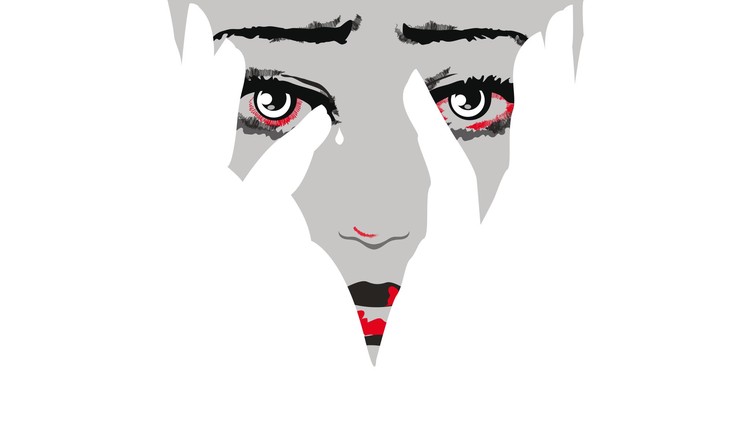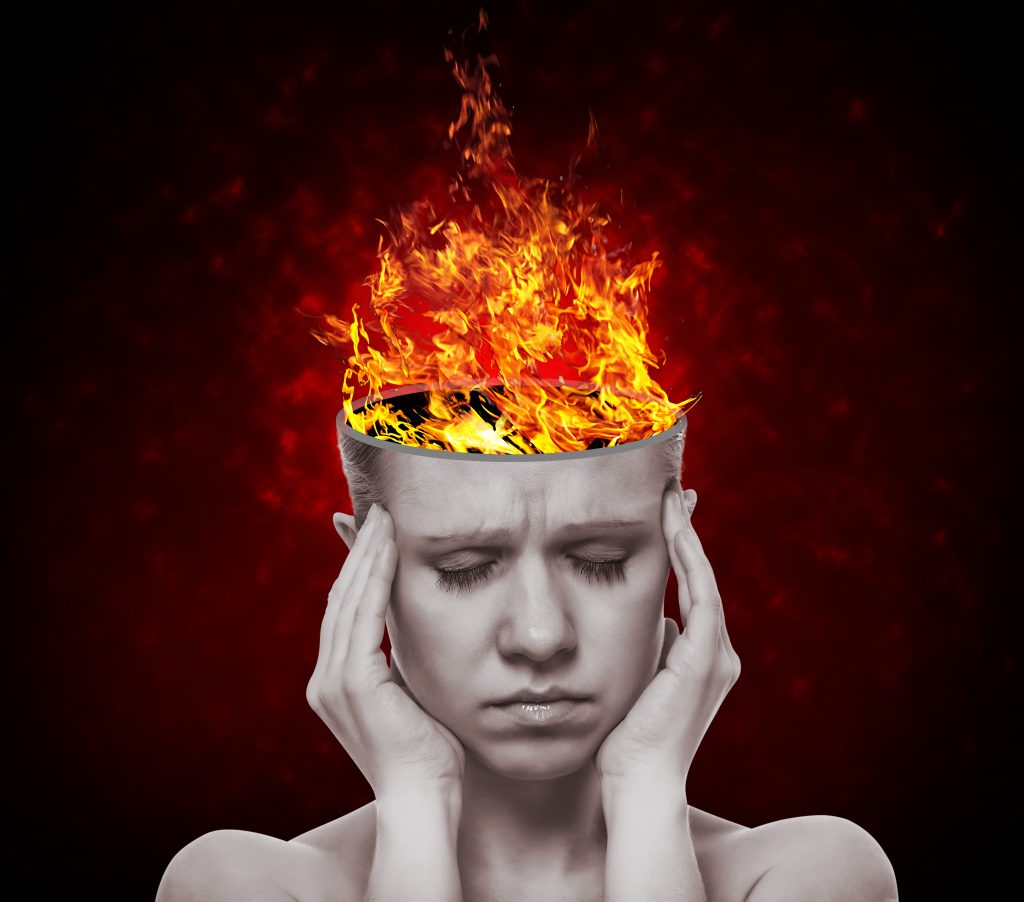Last week, the headlines were blaring: Schizophrenia breakthrough as genetic study reveals link to brain changes! We heard that our best hope for treating “schizophrenia” is to understand it at a genetic level, and that this new breakthrough was now getting us really started on that mission, as it showed how a genetic variation could lead to the more intense pruning of brain connections which is often seen in those diagnosed with schizophrenia. We were told that this study was very important. “For the first time, the origin of schizophrenia is no longer a complete black box” was one quote. And the acting director of the National Institute of Mental Health (NIMH) described the study as “a crucial turning point in the fight against mental illness”.
But is all this hype justified?
A “back story” to this article is that the NIMH has a long history of bias toward biological approaches to understanding mental and emotional difficulties, with an accompanying tendency to ignore even the most obvious evidence that these difficulties often relate to problems in living experienced by people. For example, even though numerous studies confirm that adverse childhood experiences make a later diagnosis of schizophrenia much more likely (more so than do any particular genes), the NIMH, on a website about the possible causes of schizophrenia, claims it’s “unknown” what kind of psychosocial factors might contribute to putting people at risk.
But it really isn’t a mystery. To people like NYU professor Brian Koehler who have been following both the biological and the psycho-social research for decades, it’s clear that the real story is that the biological differences we often see in people diagnosed with disorders like “schizophrenia” are often the result of stressful life events, not something that requires specific genes (even though it may be true that some genetic variations increase vulnerability to some limited degree.)
Below (with his permission) I am quoting a recent email from Brian Koehler, where he shared some of what we would be hearing from the media if the medio were being given the whole story. (His writing will make more sense to you if you understand that microglia are the type of brain cells active in the synaptic pruning that was being discussed, though only in reference to possible genetic causes, in the articles about the recent “breakthrough”…..)
In the late 1970s & early 1980s, as a result of some biochemical research I was conducting and my work in psychotherapy with people on an inpatient unit of a NYC hospital, I became very interested in the pervasive effects of chronic and significant anxiety on our brain and body. I partly made it my life’s work to study and demonstrate that the neuroscience of what we call “schizophrenia” (a highly problematic term) is in actuality, and often in many persons, the neuroscience of severe, chronic stress/anxiety/fear. I am grateful for the opportunity to be educated on the neuroscience of psychosis and stress at such places as the Nathan Klein Institute of Psychiatric Research (NKI), which is managed by the NYS Office of Mental Health and maintains a strong academic collaboration with New York University.
I quickly observed in the persons I was working with on inpatient and outpatient settings, that the content of what we call “delusions” and voices, are re-traumatizing to the person experiencing them. Not only may they be attempts at “cure” or “restitution” (as Freud thought), but they may create significant distress for many persons experiencing them, especially if they feel not in control of aversive threats, accusations, danger situations such as social exclusion, etc. Psychological and social traumas, I quickly learned in the 1970s and 1980s, were prevalent in the histories of many of the persons I was working with. Surviving survival of various social and psychological traumas also played a role in the neurobiological and immunological changes we were observing (even in persons who had not yet started taking antipsychotics, which we now know can cause neural atrophy, mostly subtle, but atrophy nevertheless). In the 1990s, I learned of transgenerational transmission of traumas (specifically, the transmission through epigenetic channels of inducible defences against threats to survival) first in plants, then insects and then in mammals. Since 1990 I have checked on every single finding in the neuroscience of “schizophrenia” and have cross-checked with the emerging literature (thanks to sMRIs, fMRIs, PET, etc.) on the neuroscience of chronic stress. To this day, I still have not found one single specific neuroscience finding in “schizophrenia.” The findings are mostly non-specific (I am leaving the door open, in the name of science, for specific findings). When one is emotionally and intellectually invested in a particular belief, it is important to look even more intensively at the evidence that disconfirms one’s belief and to strive for intellectual and emotional honesty. I admire the current Dalai Lama for when he was asked if science definitely disproved reincarnation, what would he believe? He said, he would give up his belief in reincarnation!
The latest findings in the neuroscience of psychosis have included the role of microglia and neuroinflammatory processes. (e.g., “Microglial activation and the onset of psychosis” by Tyrone Cannon, published in the American Journal of Psychiatry, January 2016). Microglial cells, are glial cells (which are at least as plentiful as neurons in the brain, of which there are close to 100 billion with trillions of connections with other neurons-the connectome) are innate immune cells of the brain. They have a role in the regulation of the extracellular milieu and they participate in neuronal regeneration. They respond quickly to injury and produce a wide variety of pro-inflammatory molecules, neurotrophic factors, and neurotransmitters. Microglial cells can be activated by several factors including systemic infection, physical trauma, oxygen and energy depletion, and some neurodegenerative disorders.
Stress definitely activates the microglia-and this has been known for quite some time. I am no longer surprised when persons researching “schizophrenia” present their findings without checking the research on such important factors as social adversities and chronic stress. I strongly believe that in many, if not most, persons with a diagnosis of “schizophrenia” the neuroscience findings could never fully be understood without reference to the whole person living in a particular sociocultural context, both of which are impacted by social adversities across the generations (e.g., the individual and social traumas of one’s parents, grandparents, social group, etc.). Not so easy to study with only neuroimaging, genome wide association scans, microarrays, etc!!
I have included only a few recent research studies documenting the effects of stress on microglia from such journals as Molecular Psychiatry, Stress, etc.
Brian Koehler PhD
Stress 2015 Jan;18(1):96-106. doi: 10.3109/10253890.2014.995085. Epub 2015 Jan 8.
Microglia activation regulates GluR1 phosphorylation in chronic unpredictable stress-induced cognitive dysfunction.
Liu M1, Li J, Dai P, Zhao F, Zheng G, Jing J, Wang J, Luo W, Chen J.Abstract
Chronic stress is considered to be a major risk factor in the development of psychopathological syndromes in humans. Cognitive impairments and long-term potentiation (LTP) impairments are increasingly recognized as major components of depression, anxiety disorders and other stress-related chronic psychological illnesses. It seems timely to systematically study the potentially underlying neurobiological mechanisms of altered cognitive and synaptic plasticity in the course of chronic stress. In the present study, a rat model of chronic unpredictable stress (CUS) induced a cognitive impairment in spatial memory in the Morris water maze (MWM) test and a hippocampal LTP impairment. CUS also induced hippocampal microglial activation and attenuated phosphorylation of glutamate receptor 1 (GluR1 or GluA1). Moreover, chronic treatment with the selective microglial activation blocker, minocycline (120?mg/kg per day), beginning 3?d before CUS treatment and continuing through the behavioral testing period, prevented the CUS-induced impairments of spatial memory and LTP induction. Additional studies showed that minocycline-induced inhibition of microglia activation was associated with increased phosphorylation of GluR1. These results suggest that hippocampal microglial activation modulates the level of GluR1 phosphorylation and might play a causal role in CUS-induced cognitive and LTP disturbances.CNS Neurol Disord Drug Targets. 2015;14(3):304-8.
Commentary: the effects of psychological stress on microglial cells in the brain.
Yuan TF1, Hou G, Zhao Y, Arias-Carrión O.Abstract
Psychological stress leads to activation and proliferation of microglial cells in different brain regions. These effects are mediated by inflammatory cytokines, as well as stress hormones including glucocorticoids and norepinephrine. Eliminating microglia from the nervous system or blocking their activation prevented the stress-induced impairments on brain cognitive functions. We conclude that microglial cells are important meditators underlying anti-depression therapies.Molecular Psychiatry 2014 Jun;19(6):699-709. doi: 10.1038/mp.2013.155. Epub 2013 Dec 17.
Dynamic microglial alterations underlie stress-induced depressive-like behavior and suppressed neurogenesis.
Kreisel T1, Frank MG2, Licht T3, Reshef R1, Ben-Menachem-Zidon O1, Baratta MV2, Maier SF2, Yirmiya R1.Abstract
The limited success in understanding the pathophysiology of major depression may result from excessive focus on the dysfunctioning of neurons, as compared with other types of brain cells. Therefore, we examined the role of dynamic alterations in microglia activation status in the development of chronic unpredictable stress (CUS)-induced depressive-like condition in rodents. We report that following an initial period (2-3 days) of stress-induced microglial proliferation and activation, some microglia underwent apoptosis, leading to reductions in their numbers within the hippocampus, but not in other brain regions, following 5 weeks of CUS exposure. At that time, microglia displayed reduced expression of activation markers as well as dystrophic morphology. Blockade of the initial stress-induced microglial activation by minocycline or by transgenic interleukin-1 receptor antagonist overexpression rescued the subsequent microglial apoptosis and decline, as well as the CUS-induced depressive-like behavior and suppressed neurogenesis. Similarly, the antidepressant drug imipramine blocked the initial stress-induced microglial activation as well as the CUS-induced microglial decline and depressive-like behavior. Treatment of CUS-exposed mice with either endotoxin, macrophage colony-stimulating factor or granulocyte-macrophage colony-stimulating factor, all of which stimulated hippocampal microglial proliferation, partially or completely reversed the depressive-like behavior and dramatically increased hippocampal neurogenesis, whereas treatment with imipramine or minocycline had minimal or no anti-depressive effects, respectively, in these mice. These findings provide direct causal evidence that disturbances in microglial functioning has an etiological role in chronic stress-induced depression, suggesting that microglia stimulators could serve as fast-acting anti-depressants in some forms of depressive and stress-related conditions.Curr Immunol Rev. 2010 Aug 1; 6(3): 195–204.
Responses of glial cells to stress and glucocorticoids
Jauregui-Huerta,1 Y. Ruvalcaba-Delgadillo,2 R. Gonzalez-Castañeda,1 J. Garcia-Estrada,1,3 O. Gonzalez-Perez,1and S. Luquin1Microglial cells are the innate immune cells of the brain. Like astrocytes, they have a role in the regulation of the extracellular milieu and they participate in neuronal regeneration [4]. Like other immune cells, they respond quickly to injury and produce a wide variety of pro-inflammatory molecules, neurotrophic factors, and neurotransmitters [59]. Microglial cells can be activated by several factors including systemic infection, physical trauma, oxygen and energy depletion, and some neurodegenerative disorders [60].
Psychological stress and glucocorticoids have long been shown to suppress immune responses [61]. Thus, GCs could be expected to exert immunosuppressive actions on brain resident microglia. Consistent with this immunosuppressive hypothesis, in vitro studies have shown that treatment of microglia with GCs decreases the ability of these cells to proliferate [62], to produce proinflammatory cytokines [63, 64], and to produce toxic radicals [65]. These anti-inflammatory actions were confirmed in a spinal cord injury model treated with methylprednisolone [66]. However, recent in vivo studies suggested that stress and GCs can enhance immune function within the brain [67]. Restraint stress combined with water immersion, for example, induces massive microglial activation in the rodent brain [68]. In addition, brief tail-shock [68], immobilization [69], and social isolation stress [70] increase the expression of interleukin-1?(IL-1?) in the rat brain [71]. Moreover, four sessions of restraint stress were capable of increasing the proliferation of microglia, apparently due to corticosterone-induced, NMDA receptor activation [72]. This proinflammatory evidence has lead to the suggestion that stress-induced microglial activation may be involved in the progression of neurodegenerative disorders [73].
In conclusion, maybe the real “breakthrough” we should be working for, would be to get the NIMH and eventually the media to become interested in a “person in context” view of mental distress and mental disorders, so that biological facts will not be taken out of context, and we can orient our institutions both toward doing more prevention of distress and disorder in the first place, and more appropriate interventions once problems have occurred!
For another, more detailed look at this same subject, I recommend the article by ISPS member Noel Hunter,



